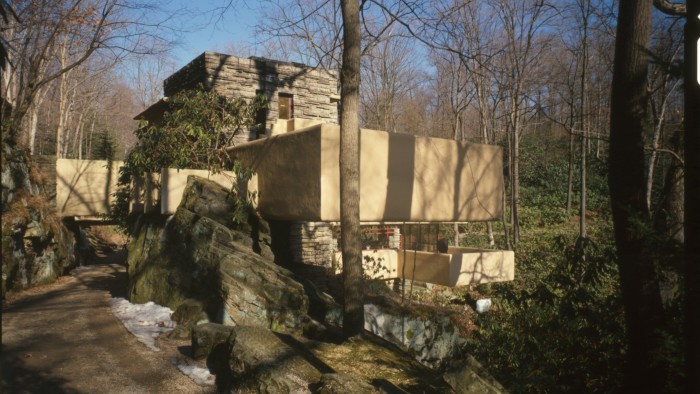Unlock the Editor’s Digest for free
Roula Khalaf, Editor of the FT, selects her favourite stories in this weekly newsletter.
Owen Hopkins’ book is chic and tactile and looks as if it were designed for coffee tables. It could be yet another objet for property enthusiasts to display, rather than anything meant to be read. But The Manifesto House is something else entirely. Despite the luxe-grade paper, extravagant photography and cover image of Le Corbusier’s Villa Savoye in Poissy, as sleek and crisp as an ocean liner, Owens has written a radical book, an authoritative reflection on the private house as catalyst for progress and a meditation on the future of architecture. He questions whether the profession has a future at all.
The book is a directory of 21 canonical houses, which Hopkins chose because they “are not simply the reflection of prevailing ideas, methods or ideologies, but act as sites for innovation, for new ideas and new ways of doing things”. Each embodies a way of organising domestic life whose time had not yet come. Often they were built by architects for themselves, their families or for private clients willing to submit to uncompromising agendas.
The houses are organised into three categories. The first group romanticises the past as much as the future. Philip Webb’s Red House (1860), built in Kent for William Morris, and Robert Venturi’s Vanna Venturi House in Philadelphia (1964), built for Venturi’s mother, were a century apart. But both blend retro-nostalgic design with what were once progressive ideas.
Hopkins’ second group faces the world outside: Frank Lloyd Wright’s Fallingwater in Pennsylvania (1938), with its concrete-tray balconies suspended over rocks and waterfalls, is an obvious example. But Sou Fujimoto’s House NA in Tokyo (2012) is less well known outside Asia. With hardly any walls, this radically transparent house is so dematerialised it is almost not there.
The third group faces the technological future. Introducing this category, Hopkins describes Richard and Su Rogers’s unrealised “Zip-Up House” (1967-69) as more like an “oversized appliance” than a home. (The architects’ 58-year-old sketch of an electric car with a charging cable plugged into its walls is a lovely, retro-futurist detail.) Artist Krista Kim’s Mars House (2020), an NFT that sold for the crypto equivalent of more than $500,000, does not exist in any physical sense. To Hopkins it represents conventional architecture’s fracturing and the possibility of something new.


Many of the houses Hopkins has selected were built in the US in the 20th century: modernism’s “fervent belief in the future” lent itself to manifestos. But there are recent examples from Africa and Asia, too. The Senegalese practice Worofila’s Keru Mbuubenne, a house completed in 2021 employing small-scale building techniques at risk in Senegal’s 21st-century construction boom, is one of the most elegant examples.
Casually interested readers will enjoy the book. Manifesto houses are usually expensive and elitist, but that brings tension to Hopkins’ thesis. He is a progressive voice in contemporary architecture as director of the Farrell Centre for architecture at Newcastle University, which has hosted some of the best exhibitions on cities and the built environment in recent years. He is also part of the curatorial team representing the UK and Kenya at this year’s architecture biennale in Venice with an installation that confronts uncomfortable themes, including the UK’s relationship with its former colony.
In the book’s epilogue, Hopkins resolves this tension between elitism and progress by calling for a new, “post-architectural” age, driven by climate change and a push for a fairer world, which partly involves repurposing existing buildings rather than constantly building new ones. In any case, he argues that “most building projects today proceed without the involvement of an architect at all”, and that architects’ agency and influence have never been lower.
In doing so, he suggests that manifesto houses, with their constant search for newness and the elevation of architect to visionary, belong in the past. He may have written the first revolutionary coffee-table book — an explosive manifesto in disguise.
The Manifesto House: Buildings That Changed the Future of Architecture by Owen Hopkins, Yale £30/$40, 240 pages
Join our online book group on Facebook at FT Books Café and follow FT Weekend on Instagram and X

Leave a Reply